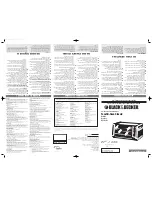
HAMWORTHY HEATING LTD
23
SHAFTESBURY HE
500001049/N
flame. The main flame should fail to light, and
burner will continue running on ignition flame only.
The pilot gas rate can be checked and adjusted as
detailed in the manufacturer's technical information
supplied with the gas burner.
IF BURNER FAILS TO LIGHT, BOILER MUST BE
PRE-PURGED BEFORE ATTEMPTING TO
RESTART BURNER. IF BURNER REPEATEDLY
FAILS TO LIGHT, A FULL INVESTIGATION TO
FIND CAUSE SHOULD BE MADE.
m.
Stop boiler/burner. Open main gas isolating
valve and restart burner. The burner will pre-purge,
ignite pilot flame and, after a short delay of several
seconds, the main flame will light. Adjust the main
gas rate as detailed in the manufacturer's technical
information supplied with the gas burner.
n.
After allowing burner to reach stable firing
conditions for approximately 15 minutes, carry out
combustion gas check.
Measure CO
2
, CO, flue gas temperature, and
circulating water temperature rise across the boiler.
The readings obtained for the appropriate gas
should be as indicated in figure 11.4, target
appliance readings.
Readings should be taken at both High and Low
settings. A link C3-C4 is provided in the control
panel terminals, the removal of which, by pulling out
the terminals, will hold the burner on low fire.
o.
After all other adjustments have been made, set
burner air pressure switch as instructed in
manufacturer's technical information supplied with
burner.
p.
Check gas pressure at burner head corresponds
with value determined from burner manufacturer's
technical information - as detailed in (f) above.
q.
Check gas flow rate at meter. Ensure that all
other appliances served by the meter are isolated
whilst flow rate is checked.
r.
Cycle boiler on and off several times to ensure
reliable burner ignition and boiler operation. Check
for gas, water and flue gas leakage. Tighten all
access, flue box and burner mounting bolts and
nuts.
s.
Set boiler control thermostat to required setting,
and check operation of heating control system.
t.
Fully familiarise the user with the boiler operating
controls, the main component functions and the
safety features.
THESE INSTALLATION AND SERVICING
INSTRUCTIONS SHOULD BE LEFT WITH THE
USER OF THE BOILER FOR FUTURE
REFERENCE.
11.5 External Controls
The external controls used in typical boiler
installations, for both vented and unvented systems,
are shown in Figure 16.1. If different systems or
controls are to be used and there are any doubts as
to the suitability, contact Hamworthy Heating
Technical Department for advice.
Check for oil, water and flue gas leakage. Tighten
all access flue box and burner mounting bolts and
nuts.
p.
Set boiler control thermostat to required setting,
and check operation of heating control system.
q.
Fully familiarise the user with the boiler operating
controls, the main component functions and the
safety features.
THESE INSTALLATION AND SERVICING
INSTRUCTIONS SHOULD BE LEFT WITH THE
USERS OF THE BOILER FOR THEIR FUTURE
REFERENCE.
11.4.3 Gas fired Boilers
a.
Check that ignition electrode and rectification
probe are correctly positioned. Refer to
manufacturer's technical information supplied with
the burner.
b.
Check that ignition electrode and rectification
probe leads are connected.
c.
Check blast tube is correctly located, and
securely fastened in place, and firebrick at rear of
combustion chamber is sound and correctly located.
d.
Check burner seats correctly onto burner
mounting plate and is securely fastened in place.
e.
With firing head separate from burner adjust air
and gas settings, as specified in the manufacturer's
technical information supplied with the burner.
f
. Determine minimum burner gas pressure which
corresponds to required burner output (boiler input),
as follows:
From the manufacturer's technical information
(supplied with the burner) take burner pressure
corresponding to required burner output.
Add combustion resistance (in mbar), given in
Figure 16.4 for the boiler in question, to obtain gas
pressure value to be measured at burner test point.
g.
Open main isolating valve in gas supply to boiler.
Check for leaks throughout gas train and pipework
to burner.
h.
Adjust gas supply governor to achieve at least
17.5 mbar (7.0 in wg) at inlet to boiler gas train.
Ensure that maximum pressure of gas train
governor is not exceeded. If a gas booster is to be
fitted, commission in accordance with the
manufacturer’s instructions.
i.
Adjust start and main output gas rates as detailed
in the manufacturer's technical information supplied
with the gas burner.
j
. Check that overheat thermostat manual reset is
set, and that boiler control thermostat and control
system are set to call for heat.
k.
Close main isolating valve in gas supply, switch
the boiler on and start the burner. The burner
control will first operate the fan to pre-purge the
boiler, then produce an ignition spark and attempt to
ignite the burner. The flame should fail to ignite and
the burner should go to lockout.
l.
Open main isolating valve in gas supply. If gas
train has separate pilot gas line, open pilot gas
isolating valve and close main gas isolating valve.
Restart boiler/burner. The burner control will pre-
purge, produce an ignition spark and ignite pilot
















































